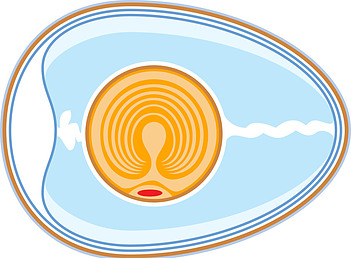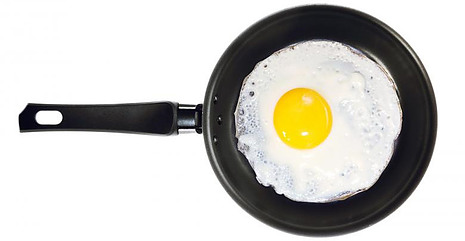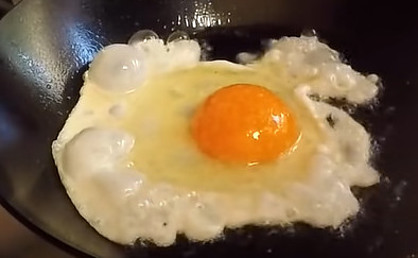Frying egg, a simple cooking way of preparing egg dishes.
Some people prefer fried egg with runny yolk, smooth egg white surface, and when eating it feels soft.
But some people prefer a fried egg with a crispy texture, looks a bit brown, fluffy, and feels a bit crunchy when eating it.
It is upon people’s own preference, both types of fried egg are equally perfect, and we don’t say one tastes better than another one.
Here we are going to discuss why eggs bubble when frying, and end up becoming crispy fried eggs.
Table of Contents
Why do eggs bubble when frying?
When the egg is subjected to the frying process with high heat, the water within the egg evaporates faster than egg white solidifies, bubbles (steam vapor) will form. The water evaporates into vapor steam trapped under the solidifying egg white struggling to rise and trying to escape, in the same time bubbles inflating because absorbing heat. The weight of the egg white put resistance on the rising steam vapor bubbles.
The egg composition.
Before that let’s get to know the composition of the egg.
There is egg yolk and egg white.
The composition of egg yolk is 18% protein, 33% fat, and 48% water.
For egg white, its composition is 13% protein, and 88% water.
Overall the egg is made of 65% water, 13% protein, and 11% fat.
Eggs contain a lot of water in egg white.
The egg solidifies and water in it evaporates.
When the egg is put into hot oil for frying, the egg white will start to solidify, and the water inside the egg will start to evaporate into steam vapor.
Frying the egg with high heat would create some big bubbles on the egg white.
When frying an egg with high heat, the water inside the egg will evaporate faster than the solidifying egg white.
The water trap under the egg white evaporates into steam vapor and forms bubbles while egg white still in a state (semi solid and semi liquid) which is able to deform easily.
The steam vapor that forms near the edges of egg white will easily escape.
Why normally big bubbles on the egg white?
The steam vapor under the egg easily forms big bubbles, why?
Steam vapor formed at the center of the egg cannot easily escape because it is far away from the edge of the egg.
While the egg white is still liquid, the bubbles are more easily formed and grow in size.
When 2 bubbles are getting bigger in diameter (because absorbing heat), and when directly touching each other, both bubbles can combine into a single bubble of bigger size.
The egg is more favorable to form big bubbles than small bubbles.
Big bubble has less surface area than a small bubble.
Bubbles are always trying to minimize its surface area because of the surface tension on the bubble surface, the bubble liquid surface tries to shrink as much area as possible.
So when 2 bubbles or more meet together, they will easily combine into a single big bubble.
How big the bubble is depends on the elasticity of the egg white (the more the egg white solidifies, the less elastic it becomes), how much heat it absorbs and the weight of the egg also puts resistance on the rising hot steam bubbles.
The water steam will continue to absorb heat and exert higher pressure to the top egg white, until the egg white not able to hold the increasing pressure and bursts.
When you lower down the heat, the bubbles start to deflate as the pressure within the bubbles decreases.
Frying the egg with high heat will make it crispy and bubbly white.
Final thought
To control the bubbles on the egg white, start by controlling the heat temperature.
When the water in the egg evaporates faster than egg white solidifies, bubbles form.
When egg white solidifies faster than water evaporates, less bubbles or no bubble will form.


